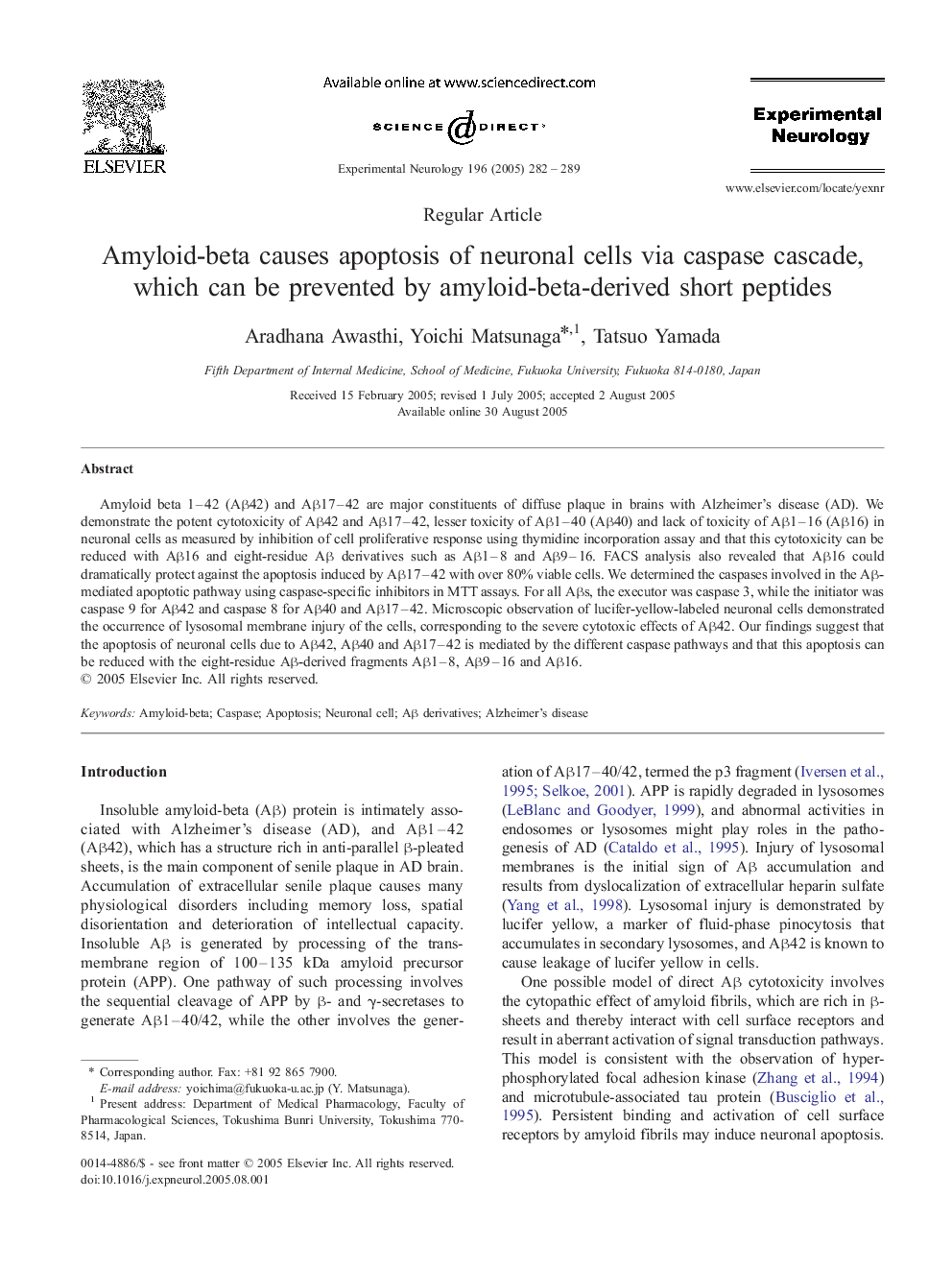| Article ID | Journal | Published Year | Pages | File Type |
|---|---|---|---|---|
| 9191906 | Experimental Neurology | 2005 | 8 Pages |
Abstract
Amyloid beta 1-42 (Aβ42) and Aβ17-42 are major constituents of diffuse plaque in brains with Alzheimer's disease (AD). We demonstrate the potent cytotoxicity of Aβ42 and Aβ17-42, lesser toxicity of Aβ1-40 (Aβ40) and lack of toxicity of Aβ1-16 (Aβ16) in neuronal cells as measured by inhibition of cell proliferative response using thymidine incorporation assay and that this cytotoxicity can be reduced with Aβ16 and eight-residue Aβ derivatives such as Aβ1-8 and Aβ9-16. FACS analysis also revealed that Aβ16 could dramatically protect against the apoptosis induced by Aβ17-42 with over 80% viable cells. We determined the caspases involved in the Aβ-mediated apoptotic pathway using caspase-specific inhibitors in MTT assays. For all Aβs, the executor was caspase 3, while the initiator was caspase 9 for Aβ42 and caspase 8 for Aβ40 and Aβ17-42. Microscopic observation of lucifer-yellow-labeled neuronal cells demonstrated the occurrence of lysosomal membrane injury of the cells, corresponding to the severe cytotoxic effects of Aβ42. Our findings suggest that the apoptosis of neuronal cells due to Aβ42, Aβ40 and Aβ17-42 is mediated by the different caspase pathways and that this apoptosis can be reduced with the eight-residue Aβ-derived fragments Aβ1-8, Aβ9-16 and Aβ16.
Related Topics
Life Sciences
Neuroscience
Neurology
Authors
Aradhana Awasthi, Yoichi Matsunaga, Tatsuo Yamada,
